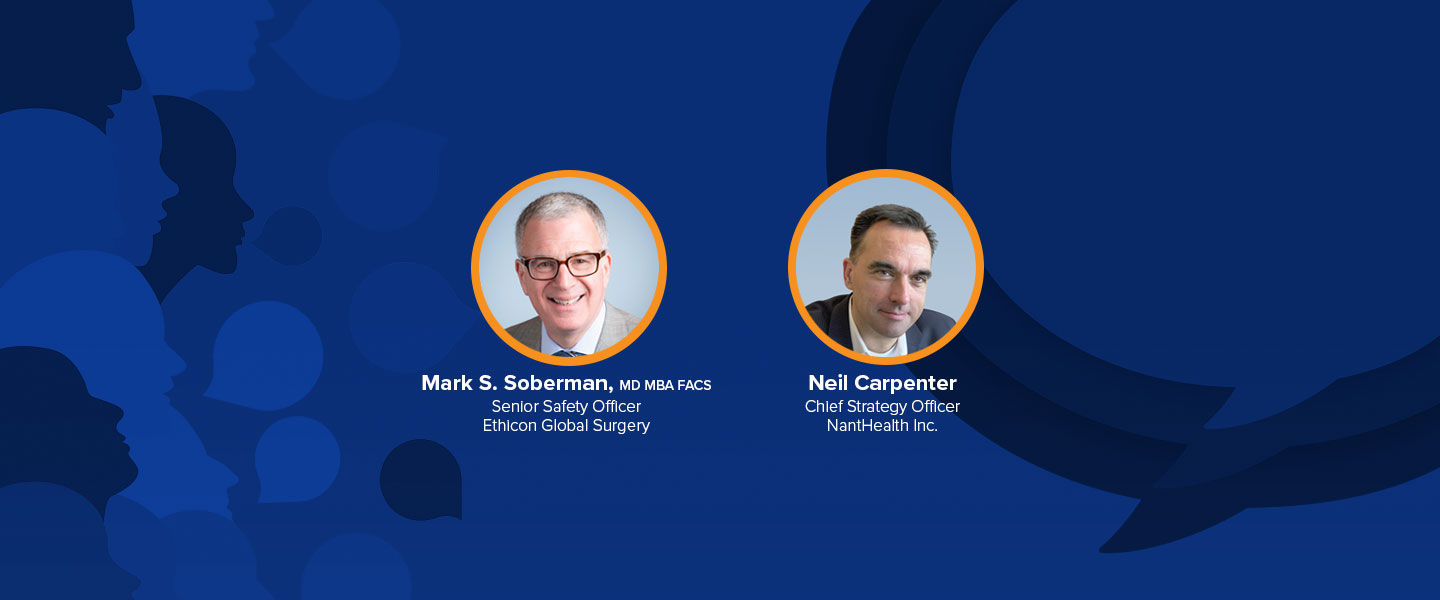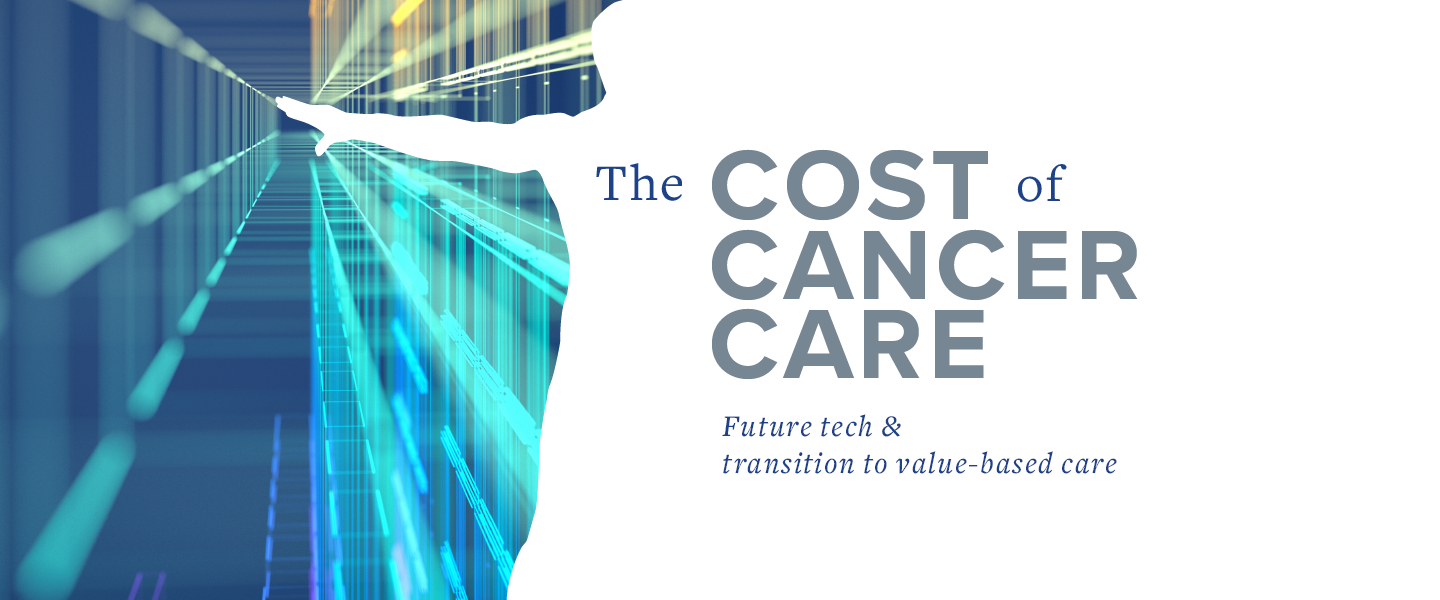The pandemic has forced us as an industry to reexamine how we interact and engage with our patients and how we provide care. There have been lessons learned and several challenges. As we are hopefully emerging from the worst of this, we must figure out what normal looks like and how we will continue to meet our patients’ needs and expectations. In cancer, we saw a delay in screenings and clinical trial enrollment, and discussions around healthcare inequities became louder across the industry as we collectively watched a public health crisis in real-time. Of our lessons learned, what can we do to move forward?
NantHealth spoke with past Association of Community Cancer Centers (ACCC) President Mark Soberman, MD MBA FACS (currently Senior Strategy Officer of Ethicon Global Surgery), on changing expectations for cancer patients, families, and providers and how the industry can respond to that challenge.
NH: What is value-based care in cancer?
There is a relatively agreed-upon definition of value-based healthcare. Value in healthcare is the outcome to the patient divided by the cost of that episode of care. We are all focused on that individual we are caring for. In every different episode of care, value is going to be defined a bit differently because the outcomes are going to be measured differently. The concept is the same. For a cancer patient or for an orthopedic patient, what’s really high-value care? Say I have a successful knee replacement, I’m back to work, I’m up and down stairs, I’m dancing at my granddaughter’s wedding, whatever it is, that’s high-value care – a great functional outcome.
So, what are the outcomes that matter to patients? For a cancer patient, first, did you cure my cancer? Did you treat my cancer effectively? Then, did you avoid as many of the side effects and adverse outcomes as possible: pain, infection, toxicity, whatever it is, depending on whether you’re having surgery or radiation, or chemotherapy. Then it’s how durable is the result? What is that experience of care like?
Then there is the cost-effectiveness. Did I receive therapy that gives me the best bang for the buck? If we look at it from the individual components of that, did I get the right diagnosis? Is my histology and my stage correct because if you don’t stage me right, I’m not going to be treated right. Was the right treatment given in the right sequence, and was it delivered effectively? Safely? Then you really get into the experience of care. One of the things that was a big emphasis for me when I was ACCC president was continuing to push for patient-centered, multidisciplinary care. It’s not just important in cancer; it is important in patient care period. In reality, it’s one of the foundations of Porter and Teisberg’s book “Redefining Healthcare: Creating Value-Based Competition on Results.”
Are we delivering patient-centered care and optimizing that experience of care? In our cancer program, we made sure we set up multidisciplinary care clinics for our new cancer patients. When a new patient came in for a diagnosis, they were seen by a radiation oncologist, medical oncologist, surgical oncologist, social worker, financial navigator, all of those people at their first visit. If that isn’t practical for your institution, you can do that sequentially or virtually, but if you don’t have all the players at the table, you’re not providing the highest value care for that patient.
NH: How would you characterize our process and evolution to get there?
We are doing better than we did ten years ago, but we have a long way to go. There are multiple barriers. Some of them are structural. For a long time, there were billing issues. If four providers saw a patient on the same day, not everybody could bill. There are time factors. Say you have busy private practitioners, and you’re not in an employed model, you’re not where everybody works for one place, a multidisciplinary, patient-centered model. It’s not like that everywhere. That’s a barrier. You have physicians with offices in remote settings, or they work for different entities. I’ve seen it done in those environments. Still, you have to have somebody who is the real champion, whether it’s a physician champion, someone in the health system who can help pull people together, and then you’ve got to have an investment in support and infrastructure. Tumor boards are the next best thing if you meet regularly, review cases, and have perspective conversations. We know we have a lot of data; certainly, in non-small cell lung cancer, we know that tumor boards improve outcomes. We know that navigation helps – navigators can help bridge those gaps and connect the dots. Yes, we are doing better, but we still have a lot of work.
NH: How have the last two years changed how we think about cancer?
One of the undesired effects of everything going on with COVID is that people have been delaying care. I think that’s going to be something that we will have to deal with as a cancer community. We are going to be seeing people coming in with later-stage disease, more advanced disease, people who we might have been able to have a better outcome from earlier stage disease had we been able to diagnose them. This will not be the last public health crisis we have in humanity. We have to figure out how to be more resilient in the future when it comes to this sort of thing. How do we make sure people don’t postpone care during episodes like this? A good thing about the pandemic is that telehealth is now much more prevalent than before, and in cancer, we could clearly utilize more in terms of follow-up, and we have not done that. I’m hoping there will be interesting developments about remote monitoring and symptom reporting related to telehealth.
NH: What aren’t we talking about right now in cancer that we should be?
There are a few things. We talk a lot about multidisciplinary care. I don’t know how prevalent it is. Once you get out of the meetings and the associations, how many people in the community are talking about it? The enlightened community programs are doing it, but there is a lot of care that’s unconnected. Patients bounce around from doctor’s office to doctor’s office, and the dots aren’t being connected.
Another issue is that there are still tremendous issues with disparities in care. It’s not even just access. There was some great work done by Dr. Ray Osarogiagbon on access and equity in healthcare. How you do with your cancer diagnosis is often a function of your zip code. It’s not even a function of your insurance status. Dr. Osarogiagbon’s data shows that for some people in certain zip codes that are insured, their care is worse than somebody else’s because of where they live. It has to do with medical decision-making and decision support. The fact is that your doctor has a lot of control and influence over what happens. Some of us are better than others, some are great physicians, some are OK physicians. How do we get all the B players up to A players? How do we get that decision support, that data, that information, that help so that every patient, no matter who they go to see, is going to get that on protocol, on guideline care?








